Did you know that speech is one of the most refined and intricate acts that the motor system carries out? Our voice box is similar to the hundreds of muscles in our chest, neck, jaw, and tongue. In that, the components that facilitate speech must function completely and cohesively. Even the slightest inaccuracy in movement can present challenges in the way we communicate, making our daily interactions difficult. According to the American Speech Language Hearing Association (ASHA), “Speech or language impairment is the second most common disability category for which children ages 6–21 are served under the Individuals With Disabilities Education Act (IDEA).” This blog, and the video attached, will present a general breakdown of Speech Therapy or Speech Language Pathology (SLPs). You will gain insight from two seasoned Speech-language pathologists (SLP) as they provide an overview, the benefits, and the processes for receiving Speech Therapy. The link below is urgently waiting for you to click for more information!
Section 1: “What is speech therapy?”
Speech Therapy is defined as training to help people with speech and language problems to speak more clearly. The goal is to improve their communication, comprehension, and language skills. This may look like increasing their vocabulary, increasing their sentence length, helping their production of sound, and their ability to understand verbal or nonverbal language. It may also look like helping to build their receptive language repertoire. For example, teaching the ability to respond to questions appropriately or follow the directions of a task appropriately. Lastly, speech therapy can also be used to improve a person’s social language. Examples of working to improve social language include; practicing interacting in a social setting, and responding appropriately to greetings, and farewells from adults and peers their age.
Section 2: “Who can benefit from speech therapy?”
Speech therapy can benefit anyone who has any communication delay or deficit. Communication and speech-related challenges vary from person to person. Some individuals are unable to speak. Others love to talk but may have difficulty holding a conversation or understanding social cues while conversing with others. Speech therapy has numerous benefits for ages ranging from 6 months of age all the way to the elderly. It allows them to express themselves more, helping them to understand the world around them, and improving their ability to form relationships and function in day-to-day life. For example, a child who may have an expressive deficit, struggle to formulate sentences, and/or have a minimal vocabulary, can be taught how to use complete sentences and increase their vocabulary through therapy. Speech therapy allows people to express themselves in a more functional and effective way by teaching them strategies to build their vocabulary and structure complete sentences.
Section 3: “What are the signs someone needs speech therapy?”
“Signs can vary depending on the area of need such as expressive language, receptive language, or social pragmatics. Signs that a child may need speech therapy can be seen as early as the infant stages. Here are some common signs that someone requires speech therapy”:
- “An infant is not babbling or struggles to produce many sounds”
- “A child who is not answering questions correctly or not understanding what is asked of them”
- “A child is unable to produce words in order to complete a sentence”
- “A child is unable to ask for wants or needs”
- “A child is unable to initiate communication without prompting from others”
- “A child cannot be understood by others verbally or nonverbally”
Section 4: “What is the process to get started?”
The first step in getting started is to schedule an initial evaluation with a Speech-language pathologist (SLP). During this time, the pathologist may use a variety of methods to assess the client’s eligibility for services. The SLP practitioner will evaluate the child’s cognitive-communication, motor, visual, and auditory functions, as well as spoken/unspoken language. After the evaluation, the SLP practitioner will identify where the client needs assistance and will develop strategies and goals for intervention.
Conclusion:
Overall, the goal of speech-language therapy is to increase self-esteem and independence by improving the ability to communicate whether it is producing speech sounds clearer, speaking more fluently, or being able to understand and express one’s feelings and thoughts. Individuals of all ages can benefit from speech-language therapy. Speech therapy is a proven, effective treatment that has helped millions of people to improve their language and communication skills. If you would like more information click the link to the website below!
References:
American Speech-Language-Hearing Association. (n.d.). What is speech? what is language?. American Speech-Language-Hearing Association. https://www.asha.org/public/speech/development/Speech-and-Language/
Broomfield J, Dodd B. Is speech and language therapy effective for children with primary speech and language impairment? Report of a randomized control trial. Int J Lang Commun Disord. 2011 Nov-Dec;46(6):628-640. doi: 10.1111/j.1460-6984.2011.00039.x. Epub 2011 Jul 1. PMID: 22026565.
Cownie, L. (2021, March 3). What are the benefits of speech-language therapy?. Carolina Pediatric Therapy. https://www.carolinapeds.com/knowledgebase/what-are-the-benefits-of-speech-language-therapy
Lakeside speech and language therapy. Lakesidespeech. (2020). https://www.lakesidespeech.com/
Social Media Links:
https://www.youtube.com/@stepsuniversity
- “What is Speech Therapy” video
https://www.instagram.com/stepsbehavioralhealth/
